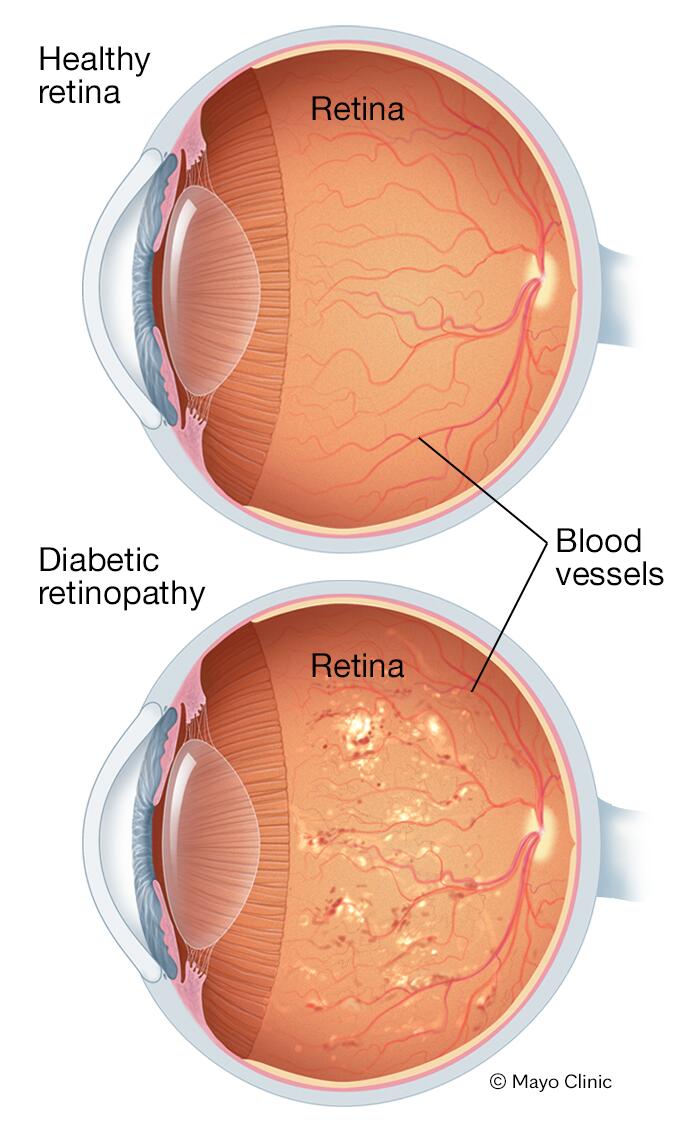
Retinopathy is a potentially serious eye condition that can lead to vision loss if not properly monitored and treated. Understanding the symptoms of retinopathy is crucial for early detection and effective management of the condition. In this article, we will explore what retinopathy is, common symptoms to look out for, and how to seek appropriate medical attention if you suspect you may be experiencing retinopathy.
What is Retinopathy?
Retinopathy is a term used to describe a group of disorders that affect the retina, the tissue at the back of the eye that is responsible for converting light into signals that can be interpreted by the brain as vision. There are several different types of retinopathy, each with its own causes and symptoms. The most common forms of retinopathy are diabetic retinopathy, hypertensive retinopathy, and retinopathy of prematurity.
Diabetic retinopathy is a complication of diabetes that occurs when high blood sugar levels damage the blood vessels in the retina. This can lead to swelling, bleeding, and the growth of abnormal blood vessels in the eye. Left untreated, diabetic retinopathy can cause vision loss and even blindness.
Hypertensive retinopathy is a condition that occurs when high blood pressure causes damage to the blood vessels in the retina. Symptoms of hypertensive retinopathy can include blurred vision, headaches, and changes in vision.
Retinopathy of prematurity is a condition that affects premature infants, where abnormal blood vessel growth in the retina can lead to vision loss if not treated promptly.
Common Symptoms of Retinopathy
The symptoms of retinopathy can vary depending on the specific type of retinopathy and the severity of the condition. However, there are some common signs and symptoms that may indicate the presence of retinopathy:
– Blurred or distorted vision
– Floaters or dark spots in the field of vision
– Difficulty seeing at night or in low light
– Loss of peripheral vision
– Changes in color perception
– Eye pain or discomfort
– Sudden vision loss
If you are experiencing any of these symptoms, it is important to seek medical attention from an eye care specialist or ophthalmologist as soon as possible. Early detection and treatment of retinopathy can help prevent further vision loss and preserve your eyesight.
Diagnosing Retinopathy
Diagnosing retinopathy typically involves a comprehensive eye examination by a trained eye care professional. During the exam, your eye doctor will use various tools and techniques to assess the health of your retina and detect any signs of retinopathy. These may include:
– Visual acuity testing: This test measures how well you can see at various distances.
– Dilated eye exam: Your eye doctor will use eye drops to dilate your pupils, allowing them to examine the retina and optic nerve more closely.
– Optical coherence tomography (OCT): This imaging test uses light waves to create detailed images of the retina, allowing your eye doctor to assess the thickness and health of the retinal layers.
– Fluorescein angiography: This test involves injecting a special dye into your arm and taking photographs of the dye as it circulates through the blood vessels in your retina, helping to identify any abnormalities.
Treatment Options for Retinopathy
The treatment approach for retinopathy will depend on the specific type and severity of the condition. In some cases, retinopathy may not require treatment if it is mild and not causing any significant vision problems. However, in more advanced cases, treatment options may include:
– Laser therapy: This procedure uses a high-energy laser beam to seal off leaking blood vessels or destroy abnormal blood vessels in the retina.
– Anti-VEGF injections: These injections can help reduce abnormal blood vessel growth and swelling in the retina in conditions like diabetic retinopathy.
– Vitrectomy: In some cases of advanced retinopathy, a vitrectomy may be necessary to remove scar tissue or blood from the eye.
In addition to these treatment options, it is important for individuals with retinopathy to adopt healthy lifestyle habits to help manage the condition and prevent further damage to the retina. This may include maintaining good control of blood sugar and blood pressure levels, eating a balanced diet rich in fruits and vegetables, exercising regularly, and avoiding smoking.
When to Seek Medical Attention
If you are experiencing any of the symptoms associated with retinopathy, or if you have been diagnosed with a condition like diabetes or high blood pressure that puts you at risk for retinopathy, it is important to seek medical attention from an eye care specialist or ophthalmologist. Early detection and treatment of retinopathy can help preserve your vision and prevent further damage to the retina.
In conclusion, retinopathy is a serious eye condition that can lead to vision loss if not properly managed. Understanding the symptoms of retinopathy and seeking prompt medical attention if you suspect you may be experiencing retinopathy are crucial steps in preserving your vision and maintaining good eye health. By working closely with your eye care provider and following their recommendations for treatment and lifestyle modifications, you can help protect your eyesight and ensure the best possible outcomes for your eye health.












